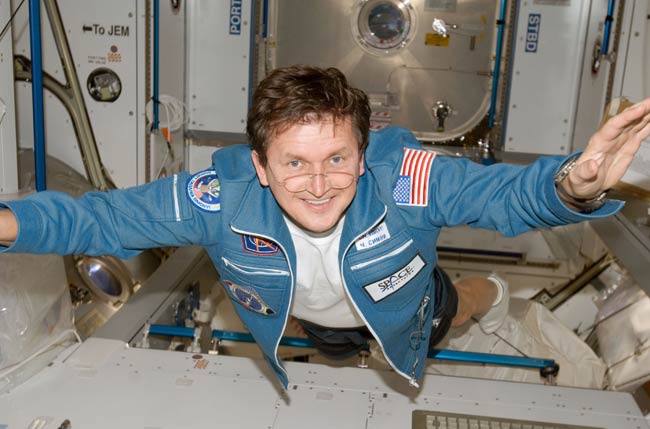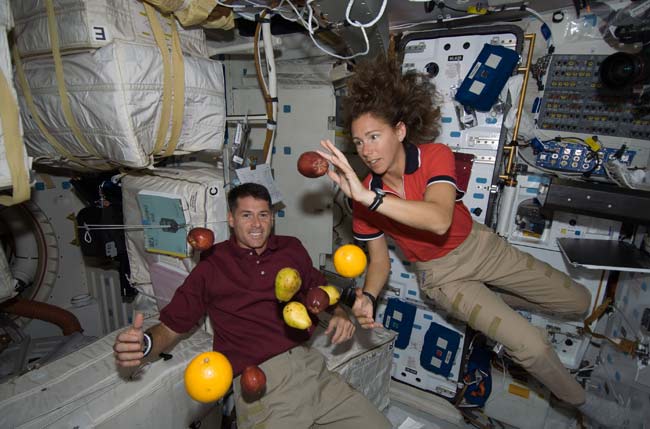Fit for Flight? Space Tourism Lacks Medical Standards

The rise of space tourism is going to bring a new headache to doctors' doors: whether or not to approve their patients for spaceflight. Worse, a new paper cautions, there is no established protocol in place to judge a person fit for making the trip.
The new study stops short of suggesting rigid regulation, saying that too much of it would hurt the space tourism industry before it even gets off the ground. Rather, the researchers encourage doctors to "consider developing a resource file for future reference."
Lead author Marlene Grenon said her team's recent paper in the British Medical Journal was designed to make doctors aware of potential health issues related to spaceflight. How to set medical standards, and the implications for insurance, are matters for further research, she said.
"The question is, should there be standards set or not?" said Grenon, an assistant professor of vascular surgery at the University of California, San Francisco. "If you start [restricting] the number of people who are going to fly to the healthiest people, you're not going to encourage the market to develop." [Photos: The First Space Tourists]
More data needed
Aerospace is one of the most highly regulated industries in the world. In the United States, pilots and crewmembers must pass strict medical exams authorized by the Federal Aviation Administration (FAA). The military has its own set of exams for Navy aviators and Air Force pilots.
Standards are even more stringent for NASA astronauts. Laser eye surgery is permitted when an astronaut is selected, but only if it was performed more than a year ago. The ability to cope in small spaces, under high stress, is extensively tested. Nutrition, exercise and mental health are constantly evaluated and recorded in the years of training before an astronaut launches.
Get the Space.com Newsletter
Breaking space news, the latest updates on rocket launches, skywatching events and more!
Physicians have plenty of data about these super-healthy space travellers. But there's little advice available for more ordinary specimens — people with health issues such as osteoporosis, for example. Only a handful of space tourists, politicians and other non-specialized astronauts have journeyed into orbit.
Doctors aren't fumbling completely in the dark, though, as they already know many of the effects of weightlessness on the human body. Microgravity hardens arteries, affects eyeballs and weakens bones. Astronauts also can get motion sickness, accumulate large doses of potentially dangerous radiation and experience kidney stones.
Kidney stones are never pleasant, but they can be particularly problematic on orbit. In 1982, the Soviet Union planned to evacuate an astronaut with a severe case from its Salyut 7 space station but ultimately decided against it.

Setting a standard
If a potential space tourist were to pop in Grenon's office today and ask for medical approval, Grenon said her primary tool would be standards set by the company flying the astronaut.
This leaves medical procedures in the hands of Virgin Galactic and other private companies, meaning that physical exams are not necessarily subject to government regulation.
Doctors are working to fill the gap. In June, an FAA-sponsored medical group suggested guidelines for flight crew and spaceflight participants.
The 23-page document suggests pre-flight measures such as medical questionnaires, screening for certain mental health conditions, and chest X-rays and electrocardiograms.
The guidelines are not binding, and the FAA's center of excellence for commercial space transportation cautioned that it does not necessarily endorse the recommendations. But Grenon said this effort is the best one put forth so far.
Medical tests will matter even more during lengthier space missions, Grenon added. On the first flights, tourists will "only be in microgravity for a few minutes. But as we step more into space and we go into a space hotel, those [conditions] are all things that will need to be better understood."
Grenon's co-authors have affiliations with the Canadian Space Agency, Virgin Galactic and several Canadian and U.S. medical schools. One has even been to space — Millie Hughes-Fulford flew on the space shuttle's STS-40 mission in 1991.
Follow Elizabeth Howell @howellspace, or SPACE.com @Spacedotcom. We're also on Facebook and Google+.
Join our Space Forums to keep talking space on the latest missions, night sky and more! And if you have a news tip, correction or comment, let us know at: community@space.com.

Elizabeth Howell (she/her), Ph.D., was a staff writer in the spaceflight channel between 2022 and 2024 specializing in Canadian space news. She was contributing writer for Space.com for 10 years from 2012 to 2024. Elizabeth's reporting includes multiple exclusives with the White House, leading world coverage about a lost-and-found space tomato on the International Space Station, witnessing five human spaceflight launches on two continents, flying parabolic, working inside a spacesuit, and participating in a simulated Mars mission. Her latest book, "Why Am I Taller?" (ECW Press, 2022) is co-written with astronaut Dave Williams.









